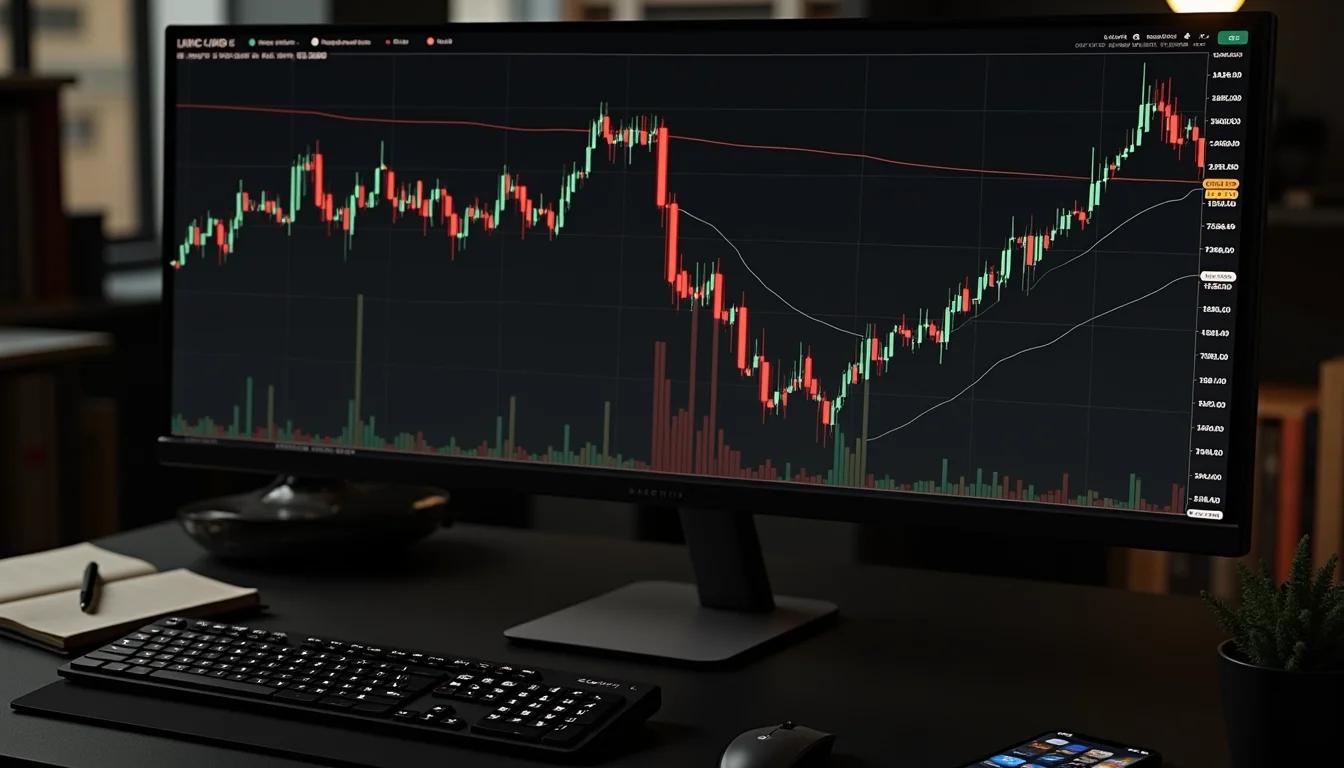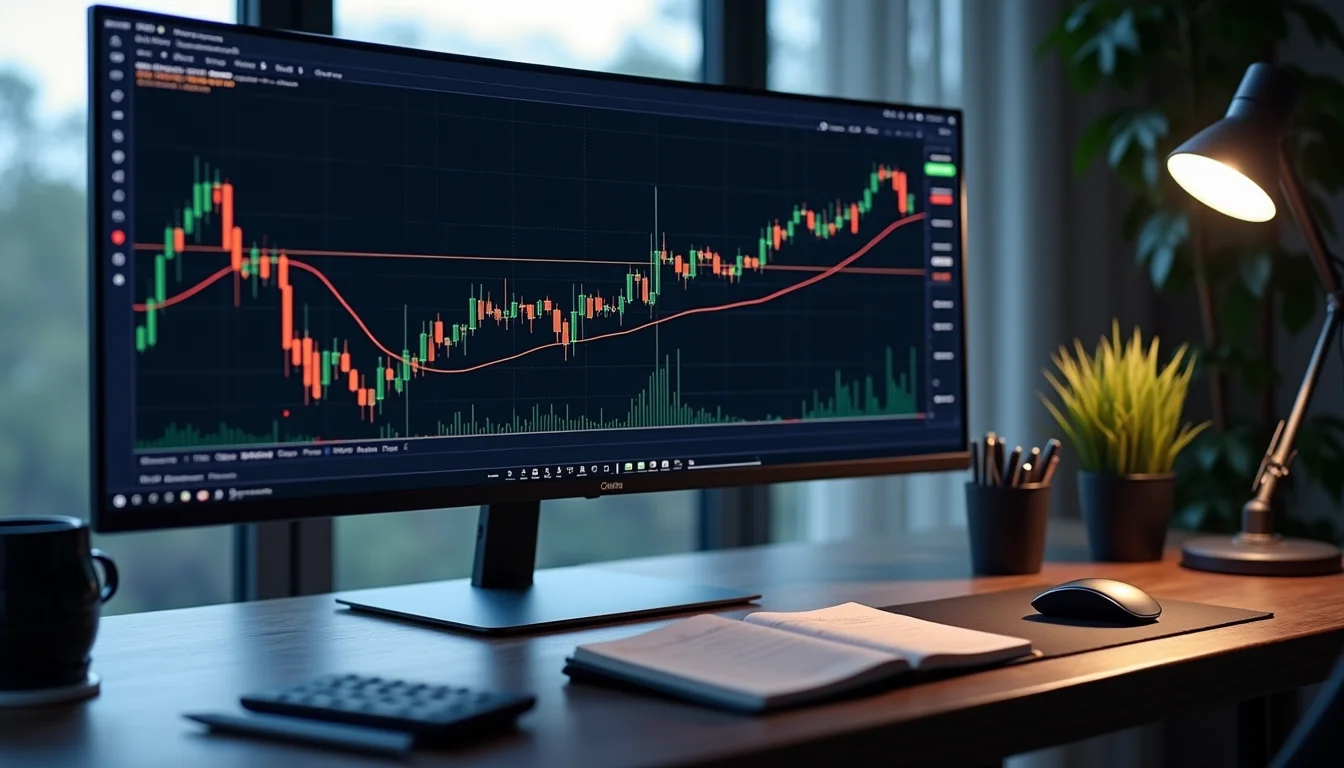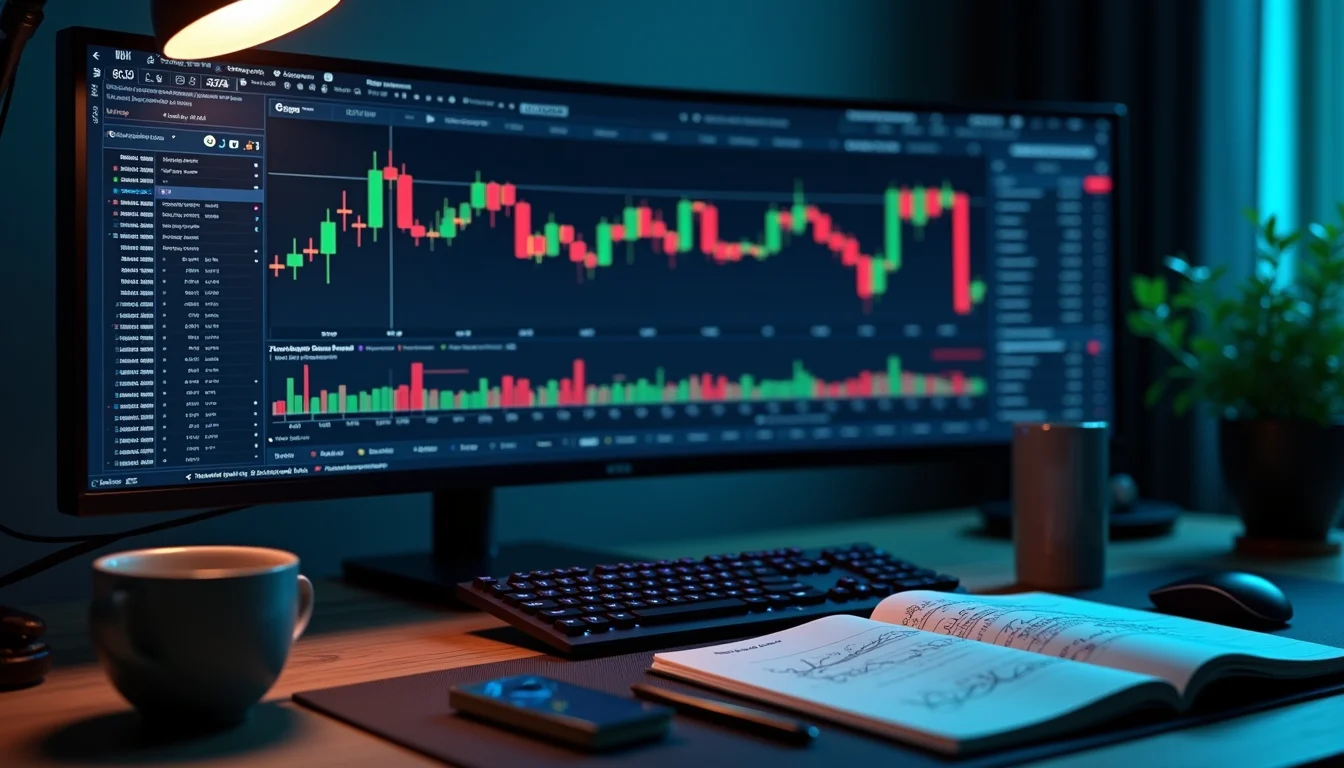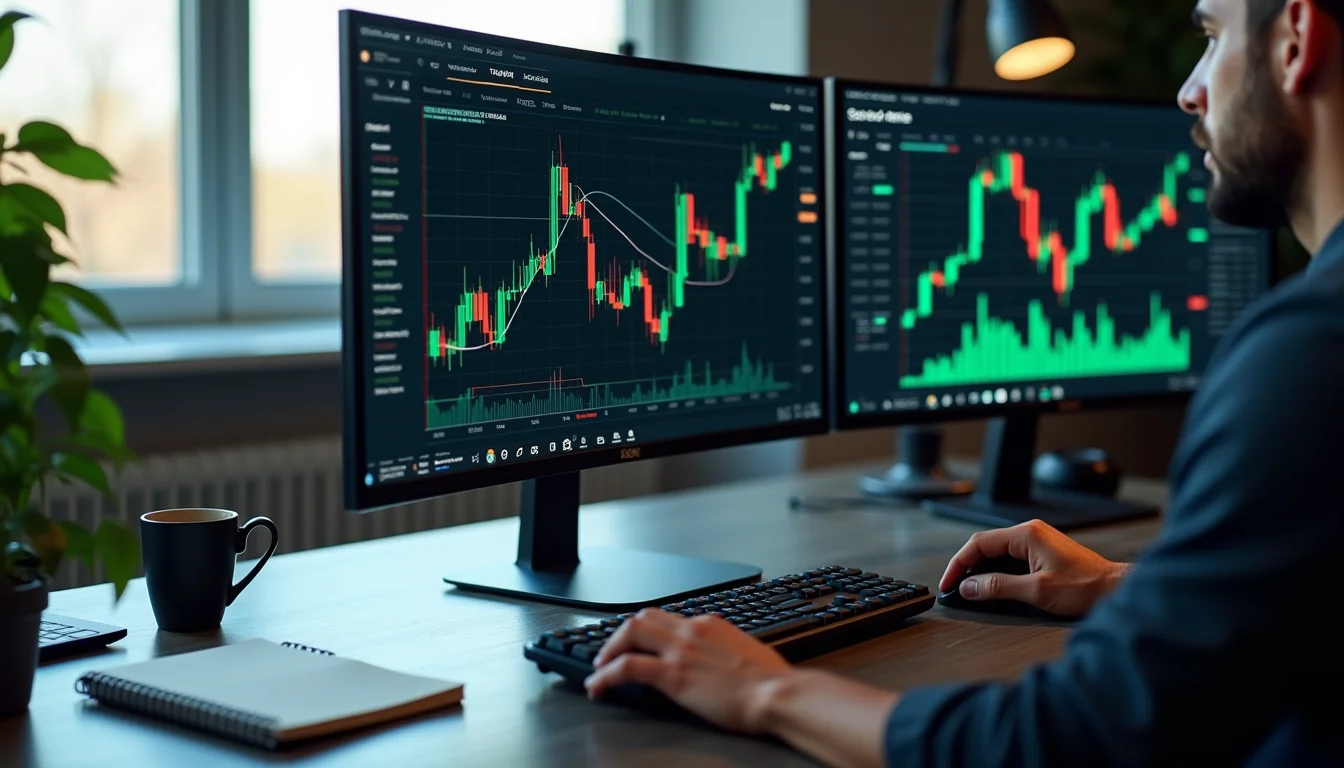I remember staring at my trading screen back in 2015, watching EUR/USD bounce between support and resistance while my account balance slowly bled out. I'd tried every indicator under the sun, read dozens of trading books, and followed countless gurus—yet consistent profits remained elusive. Sound familiar? The truth is, most traders spend years searching for that magical system that will finally deliver the best forex trading results they're chasing. What I eventually discovered wasn't a single secret strategy, but rather a framework for developing and testing approaches that actually work in real market conditions.
Over the past decade, I've tested hundreds of strategies across multiple currency pairs and market conditions. Through this trial and error—and plenty of losses along the way—I've identified what separates profitable traders from the 90% who eventually quit. In this comprehensive guide, I'll share the exact framework I use to identify and execute the best forex trading approaches for different market environments. You'll learn how to match strategies to your personality, backtest effectively, and avoid the common pitfalls that destroy most trading accounts.
Understanding Market Structure: The Foundation of All Profitable Strategies
Before we dive into specific strategies, we need to address the single most important concept in trading: market structure. I've seen countless traders jump straight into complex indicators without understanding this fundamental principle, and it's like trying to build a house without a foundation.
Why Market Structure Matters More Than Any Indicator
Market structure reveals the underlying supply and demand dynamics that drive price movement. When I mentor new traders, I always start by having them identify key structural levels on naked charts—no indicators allowed. Here's what you should be looking for:
- Higher highs and higher lows in uptrends (bullish structure)
- Lower highs and lower lows in downtrends (bearish structure)
- Consolidation ranges where price moves sideways between clear support and resistance
Last month, I watched GBP/USD form three consecutive higher lows around the 1.2600 level before breaking through resistance at 1.2750. That structural setup gave me far more confidence in my long position than any RSI reading ever could.
Practical Exercise: Mapping Structure on Live Charts
Open your TradingView chart right now and pick any major pair. Zoom out to the daily timeframe and mark the obvious swing highs and lows from the past three months. Now switch to the 4-hour chart and do the same. You'll notice these levels often align across timeframes, creating confluence zones where price is likely to react. This simple exercise forms the basis of the best forex trading decisions you'll make.
Price Action Trading: Reading the Language of the Markets
Price action trading forms the core of my approach because it works across all market conditions and timeframes. Unlike indicator-based strategies that lag price movement, price action lets you read market sentiment in real-time.
Candlestick Patterns That Actually Work
While there are dozens of candlestick patterns, I focus on just a handful that have proven reliable in my trading:
- Pin bars at key support/resistance levels with at least 2:1 body-to-wick ratio
- Engulfing patterns that swallow the previous 3-5 candles
- Inside bars after strong momentum moves signaling consolidation
Last Tuesday, I caught a beautiful pin bar rejection at a daily resistance level on AUD/USD. The setup developed over 4 hours, giving me plenty of time to analyze the context and enter with a tight stop loss. The trade eventually delivered a 3:1 reward-to-risk ratio.
Integrating Multiple Timeframe Analysis
The real power of price action emerges when you analyze multiple timeframes. Here's my standard workflow:
- Start with the daily chart to identify the primary trend and key levels
- Switch to 4-hour for confluence and potential entry zones
- Use 1-hour or 15-minute for precise entry timing
This approach ensures you're always trading with the larger trend while optimizing your entry timing. If you're serious about developing your price action skills, check out our guide on finding the best trading strategy for consistent results.
Trend Following Strategies: Riding the Momentum Waves
Trend following represents one of the most reliable approaches to achieving the best forex trading results over time. The principle is simple: identify established trends early and ride them until evidence of reversal appears.
Moving Average Strategies That Stand the Test of Time
While moving averages are among the oldest technical indicators, they remain incredibly effective when used correctly. My preferred setup uses the 20 and 50 EMAs on the 4-hour chart:
- Price above both EMAs indicates bullish trend
- 20 EMA above 50 EMA confirms momentum alignment
- Pullbacks to the 20 EMA often provide high-probability entries
I recently used this exact setup on USD/CAD during its sustained downtrend from 1.3650 to 1.3200. The pair consistently respected the 20 EMA as dynamic resistance, offering multiple short opportunities over three weeks.
ADX: Measuring Trend Strength Objectively
The Average Directional Index (ADX) helps filter out false signals by quantifying trend strength. I look for ADX readings above 25 to confirm a tradable trend, and I pay close attention when the +DI and -DI lines cross. This simple filter has saved me from countless fakeouts in choppy market conditions.
Range Trading Strategies: Profiting From Market Indecision
Markets trend only 30% of the time—the remaining 70% they're ranging. Learning to trade these consolidation periods effectively can dramatically improve your overall profitability.
Identifying High-Probability Range Setups
True trading ranges have three key characteristics:
- Clear, tested support and resistance levels
- Lower volatility compared to trending periods
- Regular oscillations between boundaries
EUR/CHF has been trading in a beautiful 150-pip range between 0.9450 and 0.9600 for the past month. Each touch of these levels has provided reliable reversal opportunities with minimal risk.
Oscillator Strategies for Range-Bound Markets
In ranging conditions, oscillators like RSI and Stochastic become much more effective. My approach involves:
- Buying when RSI drops below 30 in an uptrend or range
- Selling when RSI rises above 70 in a downtrend or range
- Waiting for confirmation with candlestick patterns at key levels
This strategy works particularly well during Asian session hours when major pairs often consolidate. For traders interested in automating these approaches, our TradeMaster Pro Strategy includes several proven range-trading algorithms.
Breakout Trading: Catching the Big Moves Early
Breakout trading offers the potential for explosive profits, but it requires careful risk management and precise timing. The key is distinguishing between genuine breakouts and false breaks.
Volume and Momentum Confirmation
Genuine breakouts typically exhibit two characteristics:
- Significant increase in trading volume (visible through tick volume or volume indicators)
- Strong momentum candles closing beyond the breakout level
I recently watched USD/JPY break above a key resistance at 150.00. The initial break showed weak volume and small candles, so I waited. Two days later, price surged through with strong momentum and high volume—that was my signal to enter.
False Breakout Traps and How to Avoid Them
False breakouts account for most losses in this strategy. I protect myself by:
- Waiting for daily closes beyond the level rather than intraday breaks
- Placing stops on the opposite side of the range
- Reducing position size on first breakout attempts
These simple rules have dramatically improved my breakout trading performance over the years. For more on developing systematic approaches, see our complete trading strategy guide.
Risk Management: The Real Secret to Consistent Profits
I've seen traders with mediocre strategies achieve outstanding results through exceptional risk management, while brilliant analysts blow up accounts with poor position sizing. This is where the best forex trading practitioners separate themselves from the crowd.
The 1% Rule and Position Sizing Mathematics
My golden rule: never risk more than 1% of your account on a single trade. This isn't just a suggestion—it's mathematical necessity for survival. Here's how I calculate position size:
- Account balance: $10,000
- 1% risk: $100
- Stop loss distance: 50 pips
- Pip value: $10 per standard lot
- Position size: $100 / (50 pips × $10) = 0.2 lots
This precise calculation ensures I survive losing streaks and live to trade another day.
Reward-to-Risk Ratios That Actually Work
While many gurus preach 3:1 reward-to-risk ratios, the reality is more nuanced. I adjust my ratios based on strategy win rates:
- High-probability setups (60%+ win rate): 1:1 to 1.5:1 R:R
- Medium-probability setups (40-60% win rate): 2:1 to 3:1 R:R
- Low-probability setups (sub-40%): Avoid entirely
This flexible approach has proven much more sustainable than rigid R:R requirements. For traders looking to deepen their understanding of algorithmic approaches, our guide to AI trading strategies covers advanced position sizing techniques.
Advanced Tips From a Decade of Trading Experience
After ten years and thousands of trades, I've accumulated insights that most trading courses never mention. These advanced techniques have consistently improved my edge and helped me achieve the best forex trading results of my career.
First, learn to trade the session overlaps. The London-New York overlap (8:00-11:00 EST) typically generates the highest volatility and cleanest moves. I structure my entire trading day around this window, using Asian session for analysis and preparation rather than active trading.
Second, develop multiple strategies for different market environments. I maintain three distinct approaches: one for trending markets, one for ranges, and one for breakouts. During periods of low volatility, my range strategy generates consistent small wins. When trends develop, I switch to my trend-following approach to capture larger moves.
Third, master correlation trading. Understanding how currency pairs move relative to each other provides incredible risk management opportunities. When I'm long EUR/USD, I'll often take a smaller position short GBP/USD to hedge my dollar exposure. This approach saved me during the Brexit volatility when GBP collapsed but EUR held relatively steady.
Finally, keep a detailed trading journal with screenshots of every setup. I review my journal weekly, looking for patterns in both winning and losing trades. This practice helped me discover that my win rate on Tuesday trades was 15% higher than other weekdays—valuable information that shaped my trading schedule.
Putting It All Together: Your Path to Consistent Profits
The journey to finding your personal best forex trading approach requires patience, discipline, and continuous learning. There's no single magic strategy that works for everyone—the key is developing a system that aligns with your personality, risk tolerance, and available time.
Start by mastering one approach at a time. If price action resonates with you, spend three months trading nothing but clean pin bar and engulfing pattern setups. Once you're consistently profitable, layer in additional techniques. This focused approach prevents the analysis paralysis that traps so many traders.
Remember that trading success comes from consistency, not home runs. The traders who last in this business are those who manage risk effectively day after day, not those who chase massive wins. Focus on executing your plan flawlessly, and the profits will follow.
If you're ready to take your trading to the next level, I encourage you to explore our TradeMaster Pro Strategy or check out our guide on building profitable strategies. The market offers incredible opportunities for those willing to put in the work—are you ready to join the profitable minority?
Frequently Asked Questions
How long does it typically take to become consistently profitable?
Most traders need 1-2 years of dedicated practice to achieve consistency. The key isn't finding a magic strategy but developing the discipline to execute your plan through both winning and losing periods. I recommend paper trading for 3-6 months before risking real capital.
What's the single most important factor in trading success?
Risk management, without question. I've seen traders with mediocre strategies achieve outstanding results through strict position sizing and stop losses, while brilliant analysts blow up accounts by risking too much on single trades. Protect your capital first, profits will follow.
How many pairs should I focus on as a beginner?
Start with just 2-3 major pairs like EUR/USD, GBP/USD, and USD/JPY. Each currency pair has unique characteristics and behavior patterns. Mastering a few pairs is far more effective than superficially tracking dozens.
What timeframes work best for new traders?
I recommend starting with 4-hour and daily charts. Lower timeframes contain more noise and require quicker decision-making, while higher timeframes provide clearer signals and more time for analysis. The 4-hour chart offers an excellent balance for most retail traders.
How much capital do I need to start trading forex seriously?
While you can open accounts with just a few hundred dollars, I recommend starting with at least $5,000 to properly implement risk management. With a $5,000 account risking 1% per trade, you have $50 risk per position—enough to trade standard lots with reasonable stop losses.



